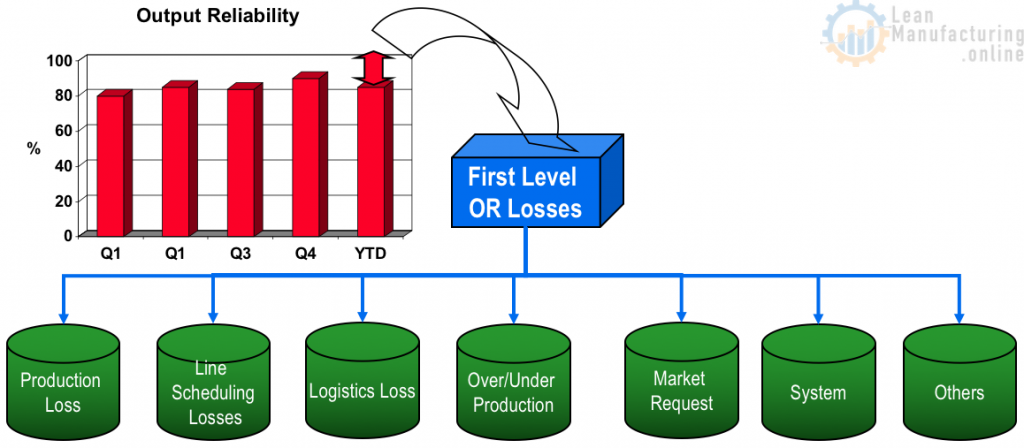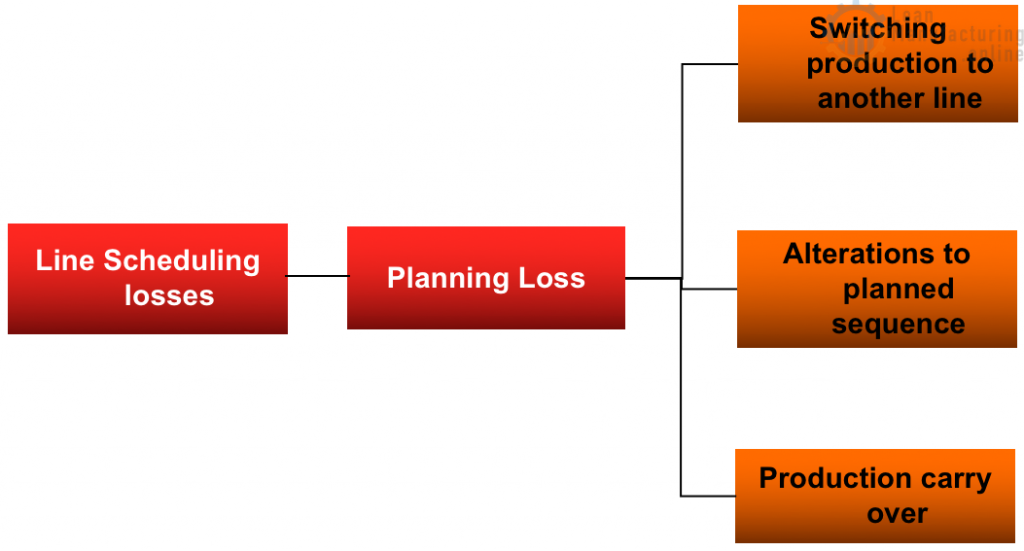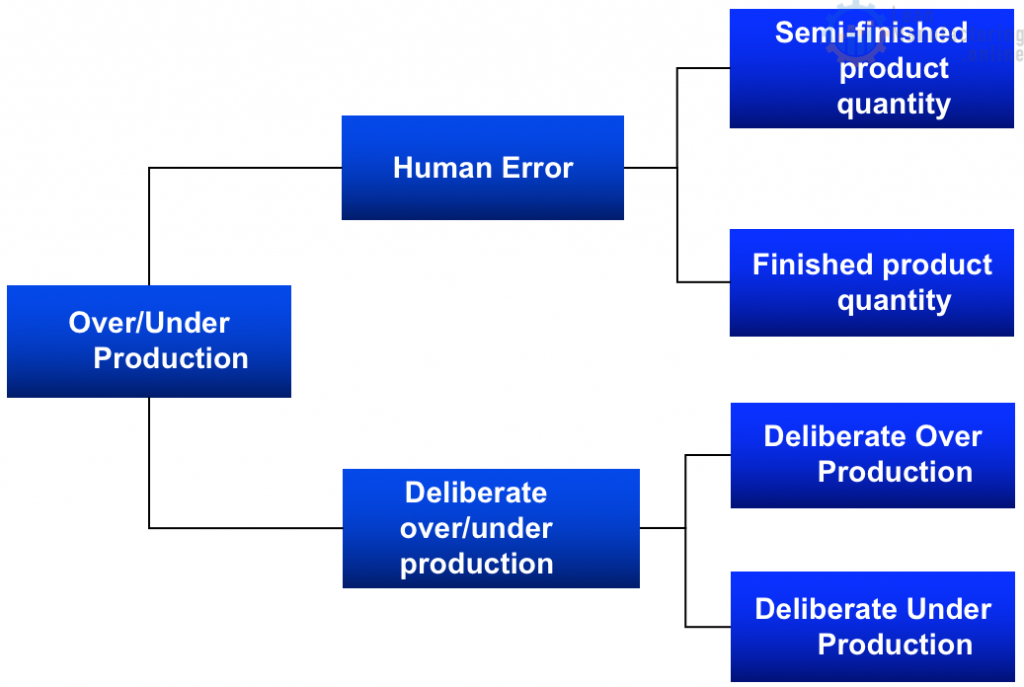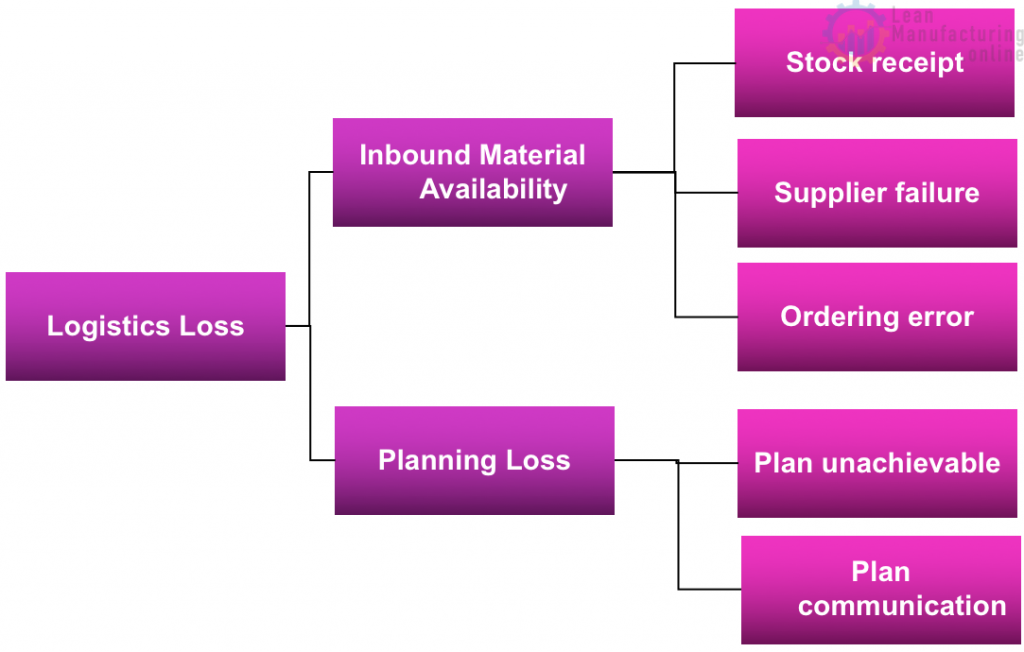KPI definition
The overall objective of this KPI is to measure the “Site service level to the Supply Chain”, providing visibility and understanding of the interface between “Make” and “Plan” elements of the Supply Chain process model.
How to calculate Output Reliability:

- The Plan should be frozen in the week previous to the actual production week
- This tool measures the production plan reliability. Therefore, it measures how different is what was planned and what was really demanded.
Implementation Considerations
- Consolidation by month, quarter, year and Virtual Sites should be done as a weighted average by SKU volume.
- Any product rejected for contamination or hygiene incidents should not be recorded as production output in this measure.
- Measurement at the plant should be on a SKU basis.
- Factories should track the number of plan changes per week to ensure that causes for a poor performance in this measure can be correctly attributed.
- Output Reliability will only be calculated on the basis of packing lines, not in processing operations.
- The key consideration in this KPI is regarding changes in the plan during the week. In order to accomplish the visibility purpose and drive improvement without affecting the factories flexibility and speed of response, the following consideration are relevant:
- Changes in the plan must be accepted and accommodated by the factory at any time this is feasible.
- However, the Output Reliability KPI must be measured against the original plan with no changes. This will provide the visibility of the losses generated outside the factory, that affects the performance of the manufacturing operation. (Ex: Changes in the plan due to forecast inaccuracy).
Objective of Output Reliability Loss Tree training
- Clarity and Visibility
- Improvement Process
- Standardize
- Identification of common opportunities
- Focus
Loss Tree – First Level

Loss 1: Production Loss
- Losses related to non conformance of Materials, Equipment failures (OEE equipment losses) or Commissioning process.
- Loss due to non-conformance of packaging materials
- Loss due to non-conformance of raw materials
- Loss due to non-conformance of working process
- Loss due to production line failure (The losses refered here are just those equipment related ones eg. Equipment Breakdown, Change over, Cutting blade change, Start up/Ramp down, Minor Stoppages, Speed and Defects & Rework.)
- Loss due to commissioning of new production line / process plant*
- Loss due to non-availability of previously agreed labour in the planning process
* Lines in commissioning due not affect any KPI, however one line commissioning can affect others lines OR.

Loss 2: Line Scheduling Losses
- Losses related to deviation on the original line plan.
- Loss due to change of production line compared to plan.
- Loss due to change of production sequence compared to plan.
- Loss due to production carried forward from previous week.

Loss 3: Under/Over Production Loss
- Losses related to any deviation on the production volume due to human error, deliberated decision or both.
- Loss due to an individual making (semi-finished) too much / little.
- Loss due to an individual packing (finished) too much / little.
- Loss due to over production resulting from a decision to consume materials or product.
- Loss due to under production resulting from a decision not to consume materials or product.

Loss 4: Logistic Losses
- Losses related to inbound materials availability, planning mistakes or plan communication.
- Loss due to stock on site but unable to use / receipt.
- Loss due to failure to suppliers to deliver materials on time.
- Loss due to a material not being ordered or the wrong material being ordered.
- Loss due to the fact that the plan was not achievable within available capacity.
- Loss due to the fact the factory were not aware of the item being on the plan.

Loss 5: Market Request Loss
- Losses related to requested plan changes due to poor forecast process or stock control.
- Loss due to a market requesting additional volume, or another SKU.
- Loss due to a market requesting volume reduction, or another SKU.

Loss 6: System Loss
- Losses related to systems such as SAP issues.
- Loss due to an inaccuracy in production recording.
- Loss due to an inaccuracy in plan recording.
- Loss due to a failure with the ESAP (eg. VMI) system.
- Loss due to missing or incorrect data provided by Accounts department, Buying department, Planning department or Category Logistics.
- Loss/Gain due to missing data.
- Loss/Gain due to incorrect data.
- Loss due to production falling within the data extraction `blind spot` Early hours of Monday morning.

Loss 7: Other Loss
- Losses that not fit in the other losses
- Loss due to any other reason.
















Excellent article, it is to interesting an has a lot o value for me. I only have one question, what does mean ABS on OR formula?
Hi Hector, thanks for the feedback.
ABS, short for “absolute”, is used to denote the absolute value of a number. The absolute value of a number is the number’s distance from zero, regardless of direction. In other words, it’s the non-negative value of the number. For example, ABS(-5) is 5 and ABS(5) is also 5. Hope it helps.
Diagram and explanations makes O.R easy to follow. Well done!